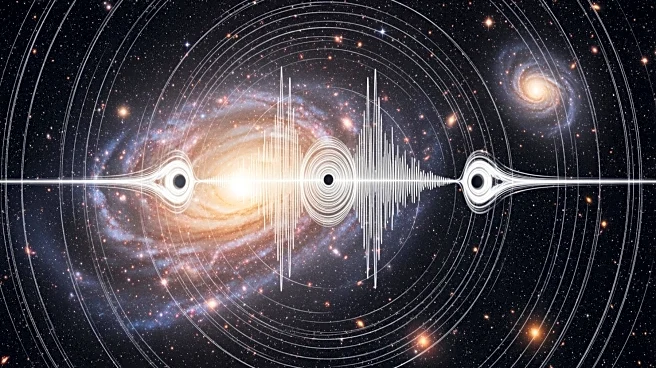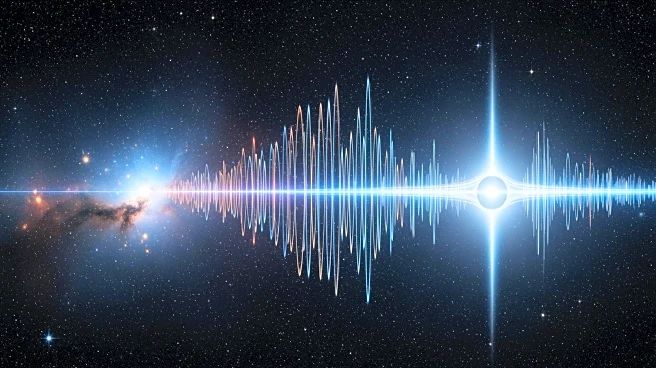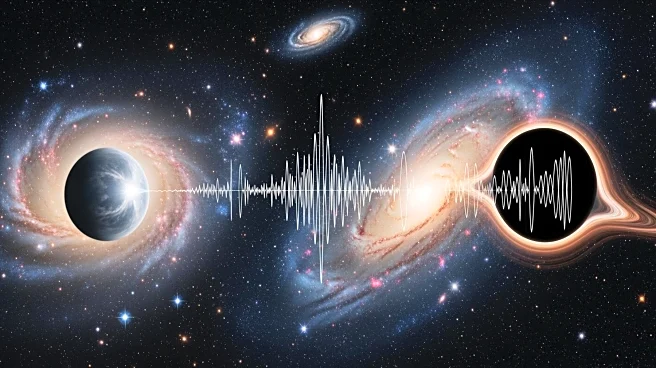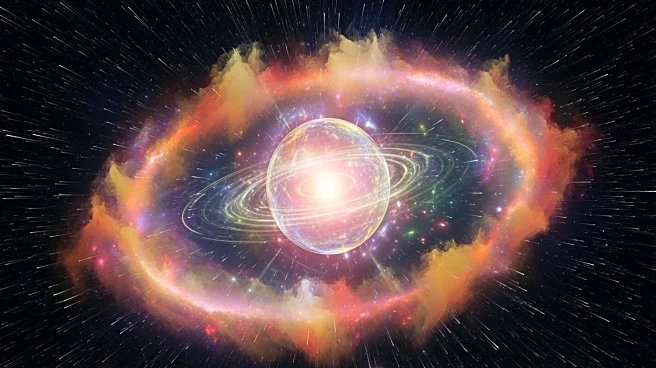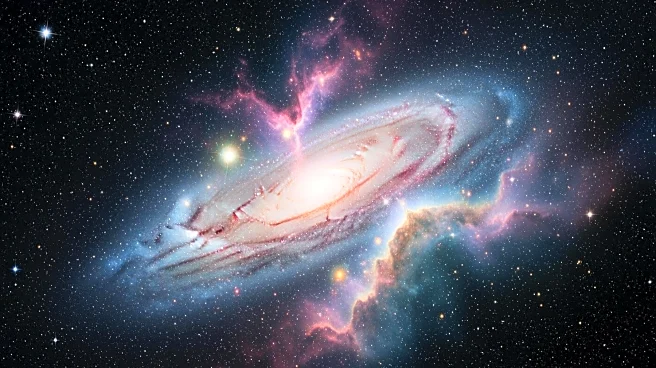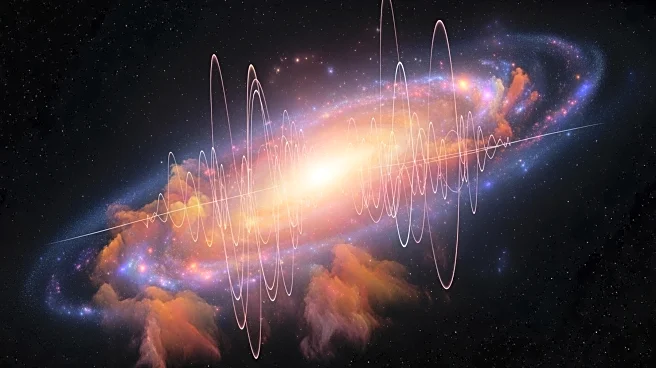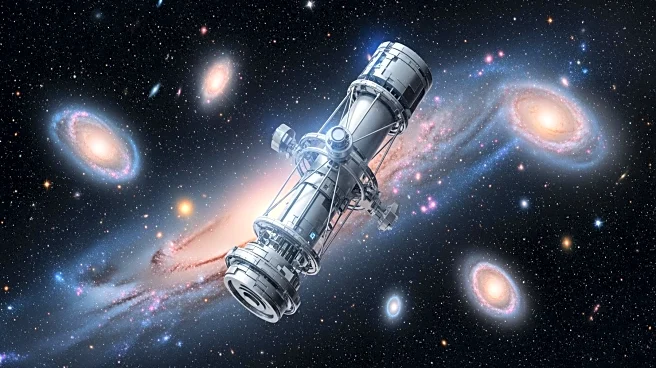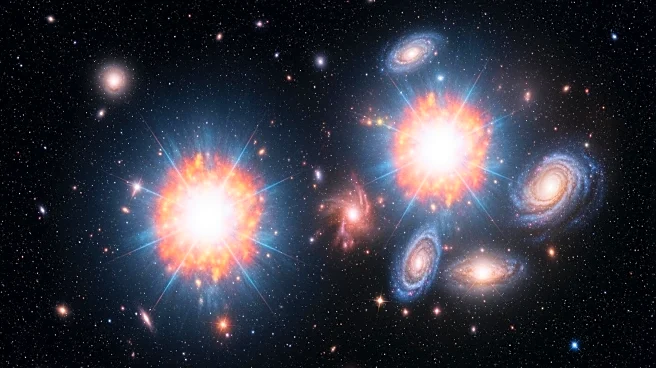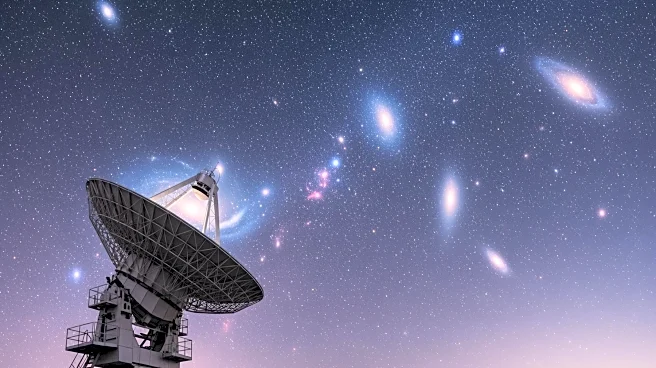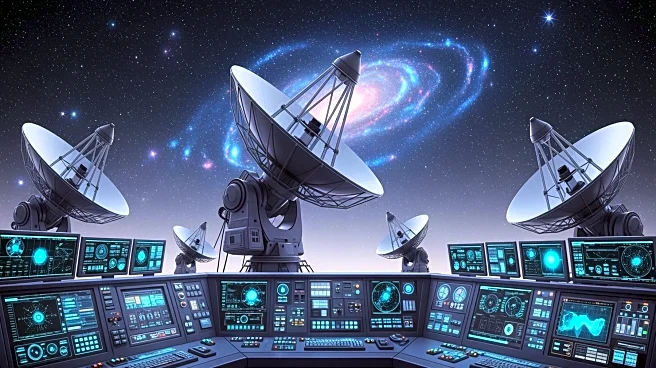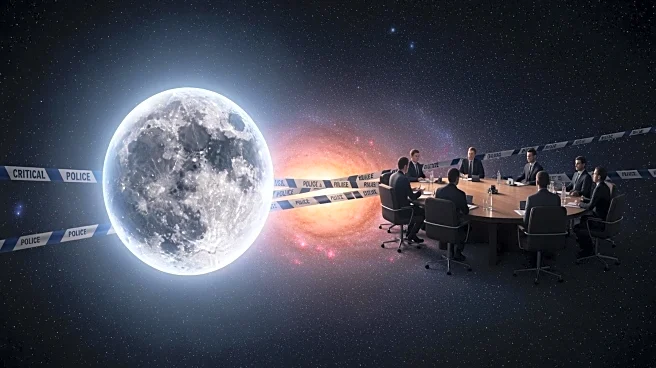What's Happening?
Scientists have developed a method to differentiate gravitational waves originating from the Big Bang and those from supermassive black hole mergers by analyzing their unique 'rhythms.' According to a study
in the Journal of Cosmology and Astroparticle Physics, these cosmic ripples can be detected using pulsars, which are dead stars that spin rapidly. These pulsars act as precise cosmic clocks, and any deviation in their timing can indicate the presence of gravitational waves. The North American Nanohertz Observatory for Gravitational Waves (NANOGrav) has already hinted at the detection of such a gravitational-wave background. Researchers Hideki Asada and Shun Yamamoto propose that the interference patterns of waves from nearby black holes can create rhythmic patterns, aiding in distinguishing these waves.
Why It's Important?
This research is significant as it could help scientists estimate the number of supermassive black hole binaries in the universe and their masses. More crucially, isolating these signals from primordial gravitational waves could provide insights into the universe's birth and the period of cosmic inflation. Understanding these waves could unlock new knowledge about the universe's earliest moments, offering a deeper comprehension of cosmic history and the forces that shaped the universe.
What's Next?
The next steps involve developing more sensitive instruments to detect the subtle 'beat' effects caused by the interference of gravitational waves. This advancement could lead to more precise measurements and a better understanding of the universe's structure and history. Continued collaboration among international observatories and advancements in technology will be crucial in achieving these goals.
Beyond the Headlines
The ability to distinguish between different gravitational wave sources could revolutionize our understanding of cosmic events and the universe's evolution. It also raises questions about the technological advancements needed to achieve such precision in measurements, potentially driving innovation in astrophysics and related fields.
